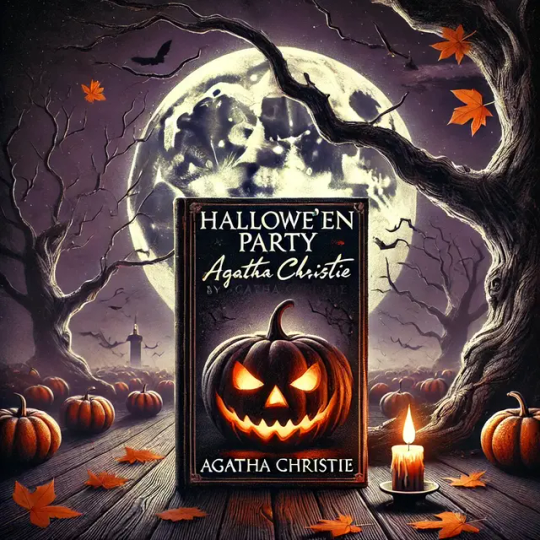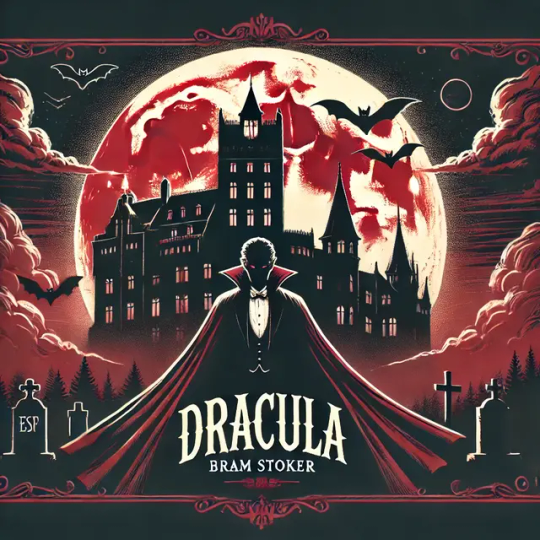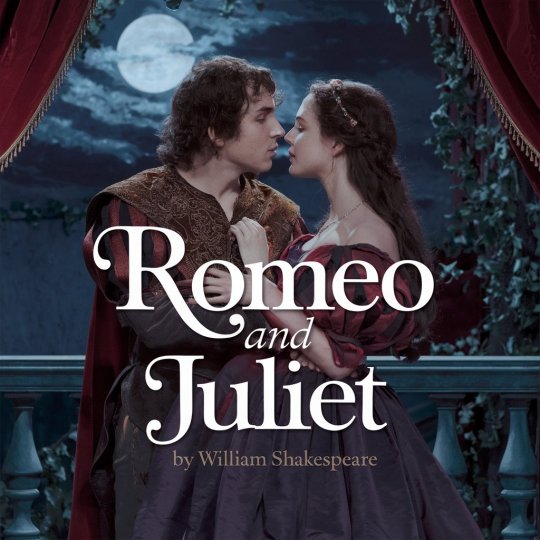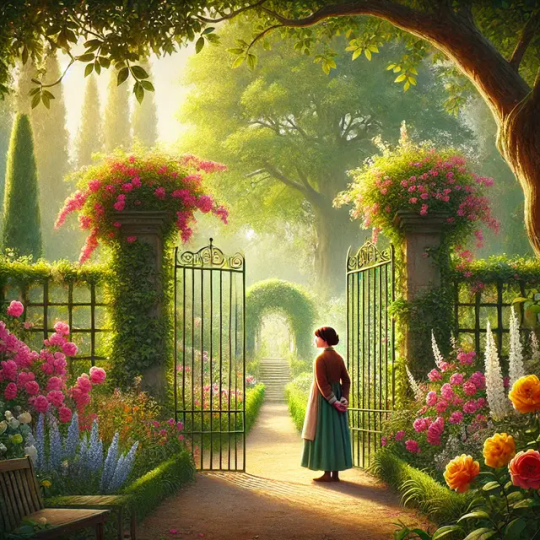Step into the enigmatic wonderland that is TaleTuner! A captivating odyssey of words awaits, where perplexity and burstiness entwine in a mesmerizing dance. Be enchanted by the symphonic allure of audiobooks and poetry recitations that resonate deep within your soul. Immerse yourself now, and let the magic of storytelling and the sheer beauty of poetry kindle the flames of your imagination. Embrace the cadence of TaleTuner - Your Melodic Journey Through Words!#TaleTuner #MelodicJourney #Enchanting #Audiobooks #PoetryRecitations #Perplexity #Burstiness #Imagination #LiterarySymphony #Resonate
Don't wanna be here? Send us removal request.
Text
Unraveling Secrets: A Review of Agatha Christie’s After the Funeral – A Classic Poirot Mystery

If you’re on the hunt for a classic mystery with a perfect blend of suspense and psychological depth, look no further than After the Funeral by Agatha Christie. Originally published in 1953, this Hercule Poirot novel showcases the Queen of Crime at her finest, delivering a story that is as intriguing as it is unpredictable.
The plot kicks off with the death of Richard Abernethie, the wealthy patriarch of the Abernethie family. While his death is initially deemed natural, his sister, Cora Lansquenet, casually suggests during the funeral that it might have been murder. The very next day, Cora is found brutally murdered, and suddenly, the question of Richard’s death demands a closer look. Enter Hercule Poirot, whose task is to untangle a web of family secrets, lies, and motives.
Christie’s mastery lies in her ability to create a complex puzzle that keeps the reader guessing until the very end. Every character is suspicious, and the old English country house setting adds a layer of atmospheric tension that pulls you right into the story. As Poirot delves deeper, the plot reveals itself to be not just about solving a crime, but about understanding the darker sides of human nature—greed, jealousy, and betrayal.
What makes After the Funeral particularly standout is its rich character development. Christie doesn’t just give us a mystery; she provides a window into the souls of her characters, making the narrative as psychologically compelling as it is suspenseful. The climax is classic Christie—a surprising, satisfying conclusion that ties together every clue with Poirot’s signature flair.
After the Funeral is a must-read for both die-hard Agatha Christie fans and newcomers alike. It’s a brilliant example of why Christie remains the unrivaled Queen of Crime, delivering a story that is sure to captivate and keep you hooked until the last page.
youtube
#After the Funeral#Agatha Christie#Hercule Poirot#classic mystery#suspense novel#whodunit#English country house#family secrets#psychological depth#murder mystery#crime fiction#Queen of Crime#book review#thriller#detective story#Cora Lansquenet#Richard Abernethie#plot twist#character development#surprise ending#best detective story#classic literature#booklr#Youtube
1 note
·
View note
Text
Hallowe'en Party by Agatha Christie

Hallowe'en Party, one of Agatha Christie's later works, is a classic Hercule Poirot mystery that deftly combines the elements of a chilling crime with the meticulous detective work that fans have come to expect from the Queen of Crime. Published in 1969, this novel brings back the beloved Belgian detective Hercule Poirot, who finds himself unraveling a tangled web of past secrets, childhood fears, and hidden motives.
The story begins with a seemingly innocent Halloween party for children, hosted by the well-to-do Rowena Drake. The party takes a dark turn when a young girl named Joyce Reynolds is found drowned in an apple-bobbing tub. Prior to her death, Joyce had boasted about witnessing a murder years before, a claim that was dismissed by the adults as a child's fantasy. When Joyce is killed, Ariadne Oliver, a regular character in Christie's novels and a mystery writer herself, suspects foul play and calls upon her old friend Hercule Poirot to investigate.
What follows is a masterful blend of suspense and psychological intrigue as Poirot delves into the lives of the party's attendees and uncovers connections to past unsolved crimes. Christie's skill in building tension is evident as the narrative weaves through a series of red herrings, false leads, and startling revelations. The novel explores themes of memory, guilt, and the often overlooked perceptions of children, all while maintaining the tight plotting and clever twists that Christie is known for.
One of the strengths of Hallowe'en Party is its atmospheric setting. The festive yet eerie backdrop of a Halloween party adds an extra layer of unease to the story. The novel also benefits from its sharp characterizations, particularly in its portrayal of Ariadne Oliver, who provides both comic relief and critical insights.
However, some readers may find that Hallowe'en Party lacks the sheer ingenuity of Christie's earlier works. The solution to the mystery, while satisfying, is perhaps not as surprising as in her most celebrated novels. Additionally, the social commentary on issues like juvenile delinquency and the treatment of children, though relevant, can feel slightly dated.
Despite these minor drawbacks, Hallowe'en Party remains a compelling read for Christie enthusiasts and fans of classic detective fiction. Poirot's final summation, as always, ties together the myriad threads of the plot with finesse, reminding readers why he is one of literature's most enduring detectives.
In conclusion, Hallowe'en Party may not be Christie's most groundbreaking work, but it is an engaging and atmospheric mystery that showcases her enduring talent for crafting intriguing puzzles. For those looking to enjoy a well-told tale of murder and deduction, this novel delivers in spades.
Free Audiobook link
0 notes
Text
The Mysterious Affair at Styles by Agatha Christie

Agatha Christie's debut novel, The Mysterious Affair at Styles, published in 1920, is a masterpiece that introduced readers to the world of Hercule Poirot, one of the most iconic detectives in literature. Set in an English country house during World War I, the novel offers all the elements that would later become hallmarks of Christie's style: a closed circle of suspects, a baffling murder, and an ingenious resolution.
The story revolves around the murder of Emily Inglethorp, the wealthy matriarch of Styles Court. She is found poisoned in her bedroom, and the circumstances are as puzzling as they are sinister. With a house full of potential suspects—each with their own motives and secrets—Poirot, a retired Belgian detective and refugee, is called upon to solve the case. The story is narrated by Arthur Hastings, a character who often accompanies Poirot in later adventures, and his perspective adds a layer of accessibility to Poirot’s more esoteric methods.
One of the novel’s strengths lies in its intricate plotting. Christie meticulously lays out clues and red herrings, inviting readers to piece together the mystery alongside Poirot. The use of the classic "locked-room" trope is handled with precision, creating a sense of claustrophobia and tension that propels the narrative forward. Every detail, from the timing of events to the seemingly inconsequential actions of the characters, plays a crucial role in the unraveling of the mystery.
Poirot himself is a compelling figure, with his meticulous attention to detail, logical reasoning, and somewhat eccentric personality. His methodical approach contrasts sharply with the chaos of the crime, and his ultimate revelation of the murderer is as satisfying as it is surprising. Christie expertly uses Poirot's foreignness—both as a Belgian and as an outsider to the English upper class—to highlight different cultural perspectives, which adds depth to his character and the story.
The novel also offers a fascinating glimpse into post-war England, capturing the social dynamics and tensions of the time. The characters are well-drawn, each with their own distinct personalities and hidden depths, which makes the unraveling of their secrets all the more engaging. The setting of Styles Court, with its grandeur and decay, serves as the perfect backdrop for a murder mystery.
If there is a critique to be made, it might be that the novel's pacing can feel slow at times, particularly in the detailed exposition of the suspects' alibis and motives. However, this deliberate pacing also allows Christie to build suspense and carefully layer the complexity of the plot.
In conclusion, The Mysterious Affair at Styles is a brilliant debut that not only introduces one of literature's greatest detectives but also establishes Agatha Christie as a master of the mystery genre. The novel's clever plotting, memorable characters, and satisfying conclusion make it a must-read for any fan of detective fiction.
Click here for full story
#Agatha Christie#Hercule Poirot#The Mysterious Affair at Styles#Classic detective fiction#English country house mystery#Locked-room mystery#Arthur Hastings#Intricate plotting#Whodunit#Post-war England#Murder mystery#Character-driven#Crime novel debut#Red herrings#Suspenseful storytelling#best detective story#classic literature
2 notes
·
View notes
Text
Dracula: A Gothic Masterpiece | The Haunting Legacy of Bram Stoker's

"Dracula," written by Bram Stoker and first published in 1897, is a cornerstone of gothic literature and one of the most famous horror novels of all time. The novel’s influence extends far beyond the literary world, shaping popular culture's depiction of vampires and horror.
The story unfolds through a series of letters, diary entries, newspaper clippings, and other documents, a format known as an epistolary novel. This approach adds to the suspense, as readers piece together the narrative from multiple perspectives, each offering fragments of the dark and mysterious events surrounding Count Dracula.
The novel begins with Jonathan Harker, a young English solicitor, traveling to Transylvania to assist a nobleman named Count Dracula with a real estate transaction. As Harker becomes increasingly uneasy about the Count's strange behavior and the ominous atmosphere of Dracula's castle, he uncovers terrifying secrets about his host. Dracula is not merely an eccentric nobleman but a centuries-old vampire with a thirst for blood and a plan to spread his undead curse to England.
One of the strengths of "Dracula" is its rich atmosphere. Stoker masterfully builds a sense of dread and foreboding, whether in the eerie landscapes of Transylvania or the dark, foggy streets of Victorian London. The novel's setting is a character in itself, with gothic elements like crumbling castles, moonlit nights, and sinister weather enhancing the terror.
Count Dracula himself is a captivating antagonist. He is both charismatic and terrifying, a creature of immense power and cunning. Stoker's portrayal of Dracula combines the allure of the exotic and the monstrous, making him a figure of both fascination and horror. His interactions with other characters, particularly the vampire hunter Professor Van Helsing, create some of the novel's most intense and memorable scenes.
The supporting characters, including Mina Murray, Jonathan Harker, Lucy Westenra, and Dr. Seward, are well-developed and contribute significantly to the story. Mina, in particular, stands out as a strong and intelligent heroine, whose resourcefulness and determination are key to combating Dracula's evil.
However, some modern readers might find the pacing of the novel slow, especially in the first half, where Stoker takes his time building the narrative. The language, reflective of the period in which it was written, might also seem archaic to some. Yet, these elements also contribute to the novel's gothic charm and authenticity.
Overall, "Dracula" is a timeless classic that has earned its place in literary history. Its exploration of fear, superstition, and the unknown resonates with readers even today. Bram Stoker's "Dracula" is not just a horror story; it is a profound exploration of the human psyche, the nature of evil, and the enduring power of myths. For fans of gothic literature and horror, it is an essential read.
Click Here to Listen Full Audiobook for Free
#Gothic literature#Bram Stoker#Dracula novel#Classic horror#Vampire story#Gothic horror#Victorian literature#Epistolary novel#Count Dracula#Gothic atmosphere#Supernatural fiction#Classic novels#Horror fiction#Victorian gothic#Literary review#authors#book blog#booklr
1 note
·
View note
Text
Romeo and Juliet by William Shakespeare

William Shakespeare's "Romeo and Juliet" is a timeless classic that has captured the hearts of readers and audiences for over four centuries. This tragic love story, set in the city of Verona, tells the tale of two young lovers whose ill-fated romance is doomed by the bitter feud between their families, the Montagues and the Capulets.
The beauty of "Romeo and Juliet" lies not only in its poignant narrative but also in Shakespeare's masterful use of language. The play is rich with poetic imagery, clever wordplay, and memorable lines that have become ingrained in our cultural lexicon. Who can forget Juliet's famous soliloquy on the balcony, where she muses, "What's in a name? That which we call a rose / By any other name would smell as sweet"?
The characters in the play are compelling and complex. Romeo, the impetuous and passionate young lover, embodies the intense and often irrational nature of youthful love. Juliet, though equally passionate, is also wise beyond her years, showing a remarkable level of maturity as she grapples with the conflicts between her love for Romeo and her loyalty to her family. The supporting characters, such as the fiery Tybalt, the wise Friar Lawrence, and the comic Nurse, add depth and dimension to the story, each contributing to the unfolding tragedy in their unique ways.
One of the most striking aspects of "Romeo and Juliet" is its exploration of themes that remain relevant today: the destructive power of hatred, the innocence of young love, and the tragic consequences of impulsive decisions. Shakespeare's portrayal of the lovers' struggle against the forces that conspire to keep them apart resonates with audiences across generations, making the play as meaningful now as it was in the 16th century.
While the play's ending is undeniably tragic, it also serves as a powerful reminder of the senselessness of violence and the futility of allowing ancient grudges to dictate the present. The deaths of Romeo and Juliet ultimately lead to a reconciliation between the Montagues and Capulets, suggesting that love, even in its most tragic form, has the power to heal and transform.
In conclusion, "Romeo and Juliet" is a masterpiece of English literature that continues to captivate readers with its beautiful language, memorable characters, and enduring themes. It is a play that speaks to the universal human experience, exploring love, hate, fate, and the choices that define our lives. Whether you're reading it for the first time or revisiting it after many years, "Romeo and Juliet" is a work that will leave a lasting impression.
Full Audiobook For Free
#Romeo and Juliet#William Shakespeare#classic literature#tragic love story#Verona#Montagues and Capulets#balcony scene#Shakespearean language#themes of love and hate#youthful passion#family feud#tragedy#timeless themes#literary masterpiece#famous quotes
2 notes
·
View notes
Text
The Secret Garden by Frances Hodgson Burnett

The Secret Garden by Frances Hodgson Burnett is a timeless classic that captures the transformative power of nature, friendship, and healing. The novel tells the story of Mary Lennox, a spoiled and neglected child who is sent to live with her uncle in a gloomy mansion after the death of her parents. Through her discovery of a hidden, neglected garden, Mary undergoes a profound personal transformation, leading her to uncover not only the secrets of the garden but also those of the people around her.
Burnett masterfully weaves themes of renewal and rejuvenation, both physically and emotionally, throughout the narrative. The garden itself serves as a powerful symbol of the potential for growth and change. As Mary tends to the garden, she begins to heal from her own emotional wounds, and in turn, she helps others, including her sickly cousin Colin and the brooding servant Martha, to heal as well.
The novel is beautifully written, with vivid descriptions that bring the garden to life in the reader’s imagination. Burnett's characters are richly drawn, with Mary evolving from a sour and lonely girl into a kind and compassionate friend. The interactions between Mary, Colin, and Dickon—an energetic local boy who embodies the spirit of the moors—are particularly heartwarming and highlight the power of companionship and mutual support.
The Secret Garden is more than just a children's story; it's a profound exploration of the human spirit and the healing power of nature. It encourages readers of all ages to reflect on the importance of nurturing both our environment and our relationships. This novel remains a cherished read for anyone who believes in the magic of gardens and the possibility of new beginnings.
Listen Full Story
#Classic literature#Children's novel#Transformation#Healing power of nature#Friendship#Personal growth#Hidden garden#Frances Hodgson Burnett#Symbolism#Emotional renewal#Victorian era#Timeless story#Secret garden#Coming-of-age#English countryside#The Secret Garden
1 note
·
View note
Text
A Thrilling Journey: Unraveling Agatha Christie's 'Murder on the Orient Express'

Murder on the Orient Express by Agatha Christie is a classic that truly deserves its legendary status. If you’re a fan of mysteries or just love a good whodunit, this novel is an absolute must-read. Christie’s ability to craft a compelling story that keeps you guessing until the very end is on full display here.
The plot centers around a murder that takes place on the luxurious Orient Express, a train journeying through Europe. When a wealthy and not-so-likeable American named Samuel Ratchett is found dead in his compartment, it’s up to the brilliant detective Hercule Poirot to figure out who did it. As Poirot interviews each of the passengers, it quickly becomes clear that everyone on board has something to hide, and the mystery only deepens with every twist and turn.
One of the things that makes this book so enjoyable is the way Christie brings her characters to life. Each one feels distinct, with their own quirks, backgrounds, and potential motives for murder. Poirot, with his meticulous approach and sharp insights into human nature, is a fascinating character to follow. You can’t help but admire the way he pieces together clues that seem impossible to connect.
The setting of the train adds a unique atmosphere to the story. The idea of being trapped on a moving train with a killer is both thrilling and claustrophobic, and Christie uses this to ramp up the tension. As Poirot gets closer to the truth, the stakes feel higher, and you find yourself racing through the pages to see how it all ends.
And speaking of the ending—wow. The twist in Murder on the Orient Express is one of the most famous in mystery literature, and for good reason. It’s surprising, thought-provoking, and leaves you questioning your own sense of right and wrong. Christie doesn’t just deliver a solution; she also makes you think about the bigger picture, about justice and morality in a way that stays with you long after you’ve finished the book.
In short, Murder on the Orient Express is an incredible read. Whether you’re new to Agatha Christie or have read some of her other works, this novel is a perfect example of why she’s considered one of the greatest mystery writers of all time. It’s a story that grabs you from the first page and doesn’t let go, with an ending that’s as satisfying as it is surprising.
Listen for Free
#Agatha Christie#Murder on the Orient Express#Mystery novel#Hercule Poirot#Classic whodunit#Crime fiction#Detective story#best detective story#Famous twist ending#Luxurious train setting#Justice and morality#Suspenseful plot#Character-driven mystery#Iconic detective#Literary classic#literary classics#Tense atmosphere
0 notes
Text
The Murder of Roger Ackroyd by Agatha Christie

The Murder of Roger Ackroyd by Agatha Christie is a quintessential example of a classic whodunit, showcasing her unparalleled talent for crafting compelling mysteries with unexpected twists. The story is set in the tranquil village of King’s Abbot, where the wealthy Roger Ackroyd is found murdered under mysterious circumstances. The brilliant detective Hercule Poirot, who has recently retired to the village, is reluctantly drawn into the investigation. As he delves deeper, a web of secrets, lies, and motives is gradually unveiled, involving a cast of intriguing characters, each with something to hide.
Christie expertly guides readers through a labyrinth of red herrings and false leads, keeping them guessing until the very last page. The novel's groundbreaking twist ending, which reveals the murderer in a truly unique and unforgettable way, has cemented its reputation as one of the greatest mysteries ever written. With its clever plot construction and intricate character dynamics, The Murder of Roger Ackroyd remains a must-read for fans of detective fiction and a testament to Agatha Christie’s enduring legacy as the Queen of Crime.
Full Audiobook for Free
2 notes
·
View notes